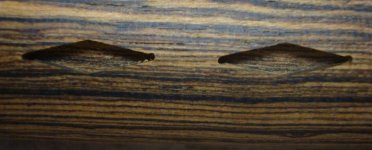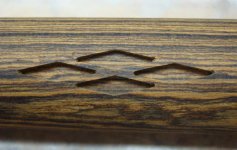It sounds like you may be on to something with not having everything truly locked down solid,but I have something that might help.
When you start the pocket,are you going to full depth right off the bat?
Are you "ramping" in where you take say a .025 deep cut,then the cutter automatically drops down (in a progressively downward angle,and slowly so the cutter doesn't load up and break) another .025 without changing direction,and so on?
What it LOOKS like,is maybe a software setting where the cutter is actually doing a "helix" where it takes a circular path to plunge to the depth for your cut,then goes elsewhere.
I've seen GOOD machinists/T+Diemakers make a wrench or some other part out of a flat plate or block,and the cutter takes the full path to make the outline of a part,then moves to a place outside of the desired shape,plunges before the next cut,then moves on.
In doing the CNC work I did in school,I made parts for the class shop,my required projects,and even stuff I made for Auto/Industrial Maintenance class shop.
Instead of making a HSS endmill plunge into steel to get to proper depth,I always drilled a hole,set that as X0,Y0,and set it so when the program started,the end mill would drop to depth or say Z-.025,take a cut,then when it dropped for the next step,it did so in that hole,then came out.
Hopefully,this will shed some light on what may be causing your problem,and ask then when you DO find your solution,you post it here,so it might help others,and keep things moving the way they should be,helping each other. Tommy D.

